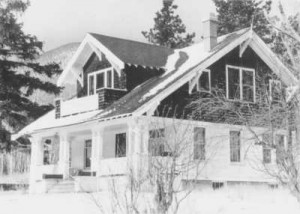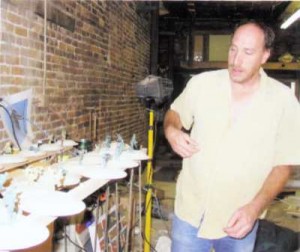Sidebar by Wynelle Catlin
Local History – December 2003 – Colorado Central Magazine
My interest in Sears-Bilt homes was sparked by my sister, Shirley Patterson, of Henrietta, Texas, who presented a paper on the subject at the National Cowboy Symposium in Lubbock. She said there was one in my area — the Ferris home.
Many famous people have lived in Sears-Bilt homes. Rumors say two of our presidents did, and that one president was born in one. But I couldn’t confirm those rumors.
Richard Warren Sears founded the Sears Company in 1886, selling watches and jewelry. Two years later, these items could be ordered from catalogs.
By 1907, the merchandise line had been expanded and the catalog became a boon to customers in rural areas. Nearly everything a household needed could be ordered via catalog.
Sears quickly established a reputation for offering quality merchandise at reasonable prices. And he created a rapport with customers so that many viewed him as a personal friend, even though their only contact was through catalogs. When pre-cut home kits were offered, they quickly became so popular that, in the 1920’s, as many as 250 to 300 kits were being shipped each month.
Each kit contained as many as 30,000 parts including all the lumber needed, cut to correct size. Also, nails, screws, roofing, paint, varnish, electrical fixtures, door knobs, hinges, bath tubs, sinks, and commodes, as well as blueprints and an instruction booklet. Shipped by rail, each kit filled two boxcars.
A customer could choose from 447 floor plans ranging from a ten-room mansion to a two-room vacation cottage, sans bathroom. An outdoor privy kit could be ordered separately.
Prices ranged from $146.50 for the cottage to $5,140 for the mansion.
Customers could personalize their homes by changing placement of windows or doors, adding or eliminating porches, fireplaces, sunrooms, window boxes, trellises or built-in cabinetry. Siding choices included clapboard, cedar, brick or stucco.
If desired, customers could supply their own blueprints and have their kit put together from that. Drapes, shades, curtains, carpeting furniture and appliances could be ordered for the finished house. Sears would finance these, as well as the home kit and the lot to erect it on. Most financing was for 5 to 15 years with monthly payments at 6% interest.
Sears-Bilt homes came in three categories. Honor Bilt, the most expensive; Standard-Bilt, recommended for warmer climates; then the Sectional or Simplex cottages.
Some 100,000 kits were sold from 1907 until 1950 when their sale was discontinued.
Today, many people are unknowingly living in Sears-Bilt homes. They can be identified by numbers or stamps found on exposed boards in attics or basements. –W.C.


